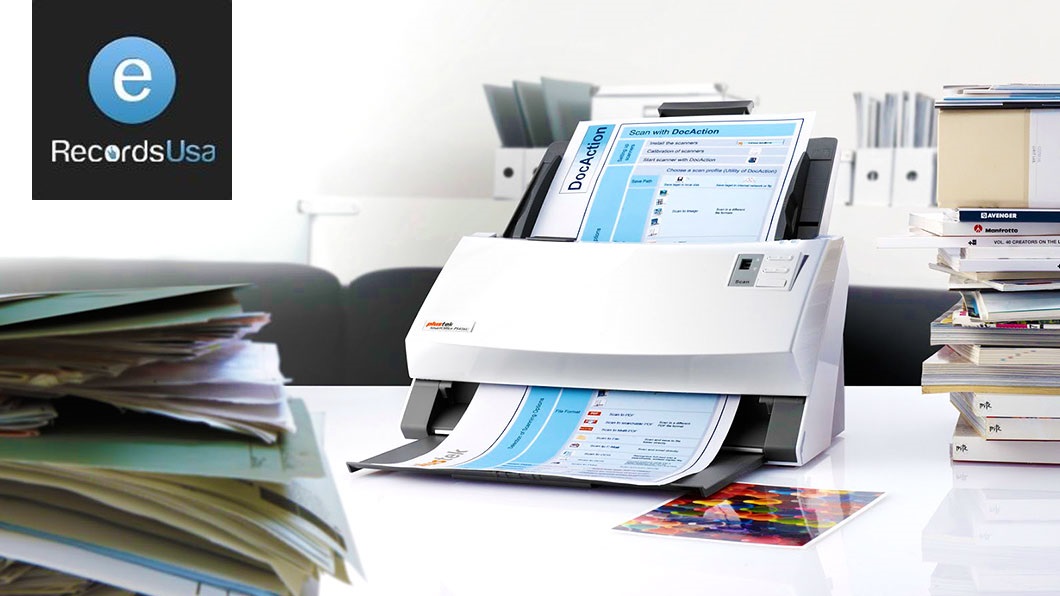The question of paper versus digital lab documentation continues to stir debate in research communities. For some, the familiar scribble of a pen on a lab notebook page remains irreplaceable. For others, digital lab notebooks (ELNs) promise streamlined workflows, audit trails, and collaborative potential that paper simply can’t match. But what if the most effective system isn’t either/or — but both?
Enter the concept of Hybrid Lab Documentation: a strategy that blends the tactile utility of paper-based note-taking with the automation, security, and searchability of digital platforms. It’s not a compromise — it’s a pragmatic approach tailored to real-world lab dynamics.
Many researchers — especially those in academia or long-established labs — express hesitation around full digital migration. Concerns range from cost and learning curves to preserving legacy notebooks and workflow disruptions. A hybrid model respects those realities, while offering a structured path forward.
This article explores why a hybrid documentation strategy is gaining traction in modern labs. We’ll break down the pros and cons of paper and digital tools, reveal real-world hybrid use cases, and provide practical, step-by-step guidance on building a system that enhances data integrity, efficiency, and compliance — without forcing an overnight transformation.
Paper vs. Digital Lab Documentation — A Quick Recap
Before diving into hybrid strategies, it’s important to understand the core strengths and weaknesses of paper and digital lab documentation. Both serve essential roles in scientific workflows — but each comes with trade-offs.
1. Paper Lab Notebooks: The Classic Research Companion
Pros:
- Universally familiar and easy to adopt — no learning curve
- Ideal for sketching diagrams, spontaneous notes, and fieldwork
- Does not require power, internet, or software updates
- Legally recognized in many jurisdictions for IP and patent claims
Cons:
- Difficult to search or retrieve specific entries
- No built-in audit trail, version control, or real-time collaboration
- Prone to physical loss, damage, or degradation over time
- Challenging to link to analytical systems or data pipelines
2. Electronic Lab Notebooks (ELNs): The Modern Research Hub
Pros:
- Searchable, organized, and structured for data retrieval
- Supports collaboration, remote access, and user roles
- Automatically captures timestamps, user info, and changes for compliance
- Enables data validation, integration, and long-term archiving
👉 Want a deeper dive into how digital lab tools strengthen data accuracy, compliance, and reproducibility? Read our full guide on Digital Lab Tools and Data Integrity →
Cons:
- Requires onboarding, training, and digital infrastructure
- Initial investment and licensing costs may be high
- Technology-dependent: usability relies on uptime, software support
- May not fully replace informal sketching or creative brainstorming
Why a Hybrid Approach Works for Modern Labs?
For many labs, the decision to go fully digital isn’t as simple as flipping a switch. Budgets, legacy practices, regulatory requirements, and user preferences all play a role. That’s where Hybrid Lab Documentation offers a powerful middle ground — combining the strengths of paper-based flexibility with the efficiency and structure of digital tools.
- Easing the Transition for Digital-Hesitant Teams – Some scientists prefer the creative fluidity of handwritten notes — or may have used paper systems their entire careers. A hybrid model respects this while introducing ELNs gradually, allowing time for training, trust, and process alignment.
- Leveraging Strengths, Minimizing Trade-Offs – Hybrid setups allow teams to:
- Sketch reaction pathways or field observations on paper
- Transfer finalized data into digital tools for searchability, analysis, and audit-readiness
- Maintain compliance with standards like ALCOA and 21 CFR Part 11
- Cost-Effective Digital Integration – Going fully digital requires upfront software, hardware, and IT infrastructure investments. A hybrid approach lowers these barriers, letting labs digitize core functions first while using existing paper workflows for low-risk activities.
- Maintaining Legacy Knowledge and Institutional Continuity – Labs with decades of handwritten records may not want to start from scratch. Scanning old notebooks and selectively integrating them into ELNs preserves historical data, intellectual property, and institutional knowledge without disruption.
How to Build a Hybrid Lab Documentation Strategy That Works?
A successful hybrid lab documentation system isn’t accidental — it’s strategically designed. Whether you’re transitioning slowly or looking to modernize specific workflows, follow these best practices to build a framework that works for your team.
| Step | Best Practices |
|---|---|
| 1. Analyze Your Lab’s Workflows | Map documentation touchpoints: – Paper: quick notes, sketches, field observations – Digital: archiving, compliance records, structured reporting Use this mapping to avoid duplication and assign the right tool to the right task. |
| 2. Choose the Right Digital Tools | Select ELNs that: – Support scanned uploads (pages, protocols) – Offer OCR for searchable content – Integrate with LIMS and visualization tools |
| 3. Set Clear SOPs | Develop protocols for: – When to use paper vs. digital – How and when to digitize entries – Applying metadata and versioning |
| 4. Implement a Digitization Process | Use flatbed or non-destructive scanners, then: – Apply OCR – Add metadata (file name, date, author) – Store in secure, backed-up digital repositories |
| 5. Train Staff and Offer Ongoing Support | Provide training for: – ELN usage and protocols – Scanning and uploading files – Documentation standards for hybrid systems |
| 6. Ensure Version Control and Chain of Custody | Clearly label digitized records: – Indicate when transfer occurred – Define authoritative source (paper or digital) |
| 7. Evaluate and Optimize Regularly | Every 3–6 months: – Review adoption and workflows – Check for audit gaps or data issues – Collect feedback and improve processes |
Real-World Hybrid Documentation Use Cases
Hybrid documentation isn’t just a theoretical solution — it’s being actively used in labs across disciplines to balance accessibility, compliance, and workflow efficiency. Here are a few real-life-inspired examples that showcase how paper and digital methods can work side-by-side.
| Lab Type | Hybrid Workflow | Benefits |
|---|---|---|
| Chemistry Lab “Sketch First, Analyze Later” |
– Use paper for sketching reaction pathways and noting in-process changes. – Transfer data to ELN post-experiment. – Upload OCR-tagged scanned pages as documentation. |
Maintains creative flexibility while ensuring searchable, compliant digital records. |
| Biology Lab “Observations Meet Digital Archiving” |
– Record observations on paper during microscopy. – Note lens positions and timing data manually. – Upload images and digitized notes to LIMS with metadata. |
Combines convenience of field notes with structured digital archiving. |
| Engineering & Materials Science Lab | – Paper sketches used for prototyping and annotating tests. – Final results and sensor data entered into digital system. – Stored with versioning and secure timestamps. |
Supports brainstorming and ensures compliance with scientific publishing standards. |
Visual Case Study Graphic: Hybrid Lab Documentation in Action
Here’s how labs are balancing paper and digital systems across disciplines:
🚧 Addressing Common Challenges of Hybrid Systems
While hybrid systems can enhance adaptability, they may also lead to issues such as data silos, inconsistent documentation standards, training gaps, and compliance concerns. Let’s explore these challenges, supported by relevant statistics, and discuss strategies to mitigate them.
1. Data Silos
Data silos occur when information is compartmentalized within different departments or systems, hindering collaboration and efficiency. A survey revealed that nearly 48% of senior decision-makers in drug development companies reported that data silos negatively impacted cross-functional collaboration within their organizations.
Mitigation Strategies:
- Standardize Data Transfer Protocols: Establish clear procedures for converting paper records into digital formats to ensure consistency and accessibility.
- Implement Integrated Data Management Systems: Utilize platforms that consolidate data from various sources, reducing fragmentation and enhancing collaboration.
- Promote Interdepartmental Communication: Encourage regular interactions between departments to facilitate data sharing and reduce isolation.
2. Inconsistency in Documentation Standards
Inconsistent documentation can lead to errors and inefficiencies. Studies have shown that incomplete data was a factor in 65% of FDA warning letters issued in 2017, highlighting the critical nature of standardized documentation.
Mitigation Strategies:
- Develop Comprehensive Standard Operating Procedures (SOPs): Create detailed guidelines outlining documentation practices to ensure uniformity across the organization.
- Regular Training and Audits: Conduct ongoing training sessions and periodic audits to reinforce adherence to documentation standards.
3. Training Gaps
The transition to hybrid systems can be challenging for staff accustomed to traditional methods. A survey indicated that only 7% of scientists were using electronic lab notebooks (ELNs), with 21% preferring paper notebooks, suggesting a significant need for training and support during such transitions.
WWT
Mitigation Strategies:
- Comprehensive Training Programs: Implement training sessions that cover both the technical and practical aspects of hybrid systems.
- Continuous Support: Provide ongoing assistance to address challenges as they arise, ensuring a smoother transition and sustained proficiency.
4. Compliance Concerns
Maintaining compliance in a hybrid system is complex. In 2017, data integrity issues were cited in 65% of FDA warning letters, underscoring the importance of robust compliance measures.
Mitigation Strategies:
- Implement Robust Audit Trails: Ensure that both paper and digital records have clear, traceable histories to meet regulatory standards.
- Regular Compliance Reviews: Schedule frequent evaluations to identify and rectify potential compliance issues proactively.
- Leverage Technology: Utilize software solutions designed to monitor and enforce compliance within hybrid systems.
By acknowledging these challenges and implementing targeted strategies, laboratories can effectively navigate the complexities of hybrid documentation systems, leading to improved efficiency, collaboration, and compliance.
The Future of Hybrid Lab Documentation
While the hybrid model is ideal for today’s transitioning labs, it’s also part of a broader trend toward structured, scalable, and interoperable scientific documentation ecosystems.
1. Increased Standardization and Interoperability
Organizations like the FDA, OECD, and NIH are promoting greater use of metadata standards, structured templates, and interconnected data systems. The goal? To make research outputs not only secure but findable, sharable, and machine-readable.
🔍 Interoperability is more than a buzzword — it ensures that data captured in today’s lab notebooks (paper or digital) can be reused, reinterpreted, or audited years later across systems.
2. Focus on Long-Term Preservation
With scientific data now forming the foundation for patents, regulatory filings, and multi-year research initiatives, labs must consider:
- Using archival-friendly formats like PDF/A or XML
- Maintaining clear version control logs tied to both paper and digital entries
- Implementing digital storage platforms with redundant backups and compliance protocols
3. Hybrid as a Transitional & Strategic Framework
Rather than being a stopgap, hybrid documentation is increasingly recognized as a deliberate, long-term model:
- Ideal for gradual digital adoption in legacy labs
- Supports field researchers and creative workflows that still benefit from physical notation
- Ensures data remains resilient, accessible, and context-rich — no matter the format
Conclusion — Why Hybrid Lab Documentation Is a Smart, Flexible Strategy
Hybrid lab documentation isn’t about choosing sides — it’s about evolving your lab’s workflow. By balancing the flexibility of paper with the compliance and searchability of digital tools, you gain the best of both worlds.
A hybrid approach:
- Respects legacy workflows and field preferences
- Enhances data integrity, traceability, and regulatory readiness
- Prepares your lab for future interoperability and collaboration
- Reduces disruption during ELN implementation
If your lab is still managing shelves of handwritten records, the first step toward hybrid optimization starts with digitizing your lab notebooks.
Lab Notebook Scanning Services by eRecordsUSA
Whether you’re looking to preserve fragile lab notes, digitize decades of research, or build an ELN-ready archive, eRecordsUSA can help. We specialize in:
- Flatbed and non-destructive book scanning
- OCR processing for handwritten scientific records
- Tagged, indexed, and searchable digital archives (PDF, TIFF, etc.)
- Regulatory-compliant digitization workflows
With over 20+ years of document digitization experience, including newspapers, journals, and confidential scientific files, we’re your trusted partner in lab record preservation.
📥 Ready to start your hybrid journey? Explore our Lab Notebook Scanning & Digitization Services →
💬 Let’s Talk Hybrid
Have questions about your current lab records setup? Let’s discuss how we can customize a digitization plan for your lab’s needs.
📧 Contact us today for a free lab archive assessment.
FAQs
1. What is the difference between hybrid lab documentation and digitization?
Hybrid lab documentation is an ongoing strategy where both paper and digital records are used together during the research process.
Digitization, on the other hand, refers specifically to converting paper records into digital formats — often a one-time or transitional process.
2. Are scanned lab notebooks considered legally valid?
In many regions, scanned lab notes are legally admissible if they are:
- Authenticated (digitally signed or time-stamped)
- Unaltered after scanning
- Stored in secure, traceable digital archives
Always check compliance against local IP, FDA, or institutional standards.
3. How often should we update our hybrid lab documentation SOPs?
Best practice suggests reviewing your standard operating procedures (SOPs) every 6–12 months, especially after:
- New equipment or software is introduced
- Regulatory changes occur
- Team turnover affects documentation consistency
4. What’s the best file format for storing scanned lab pages?
For long-term storage and regulatory compliance, preferred formats include:
- PDF/A (archival-ready)
- TIFF (lossless image format)
These formats support metadata embedding, OCR, and secure versioning.
5. How do I link scanned lab notes with an ELN?
Many ELNs allow:
- Direct file uploads (PDF/TIFF)
- Metadata tagging (date, researcher, project)
- Linking of scanned pages to digital experiment records or protocols
If your ELN doesn’t support native integration, use cloud storage + hyperlinks.














